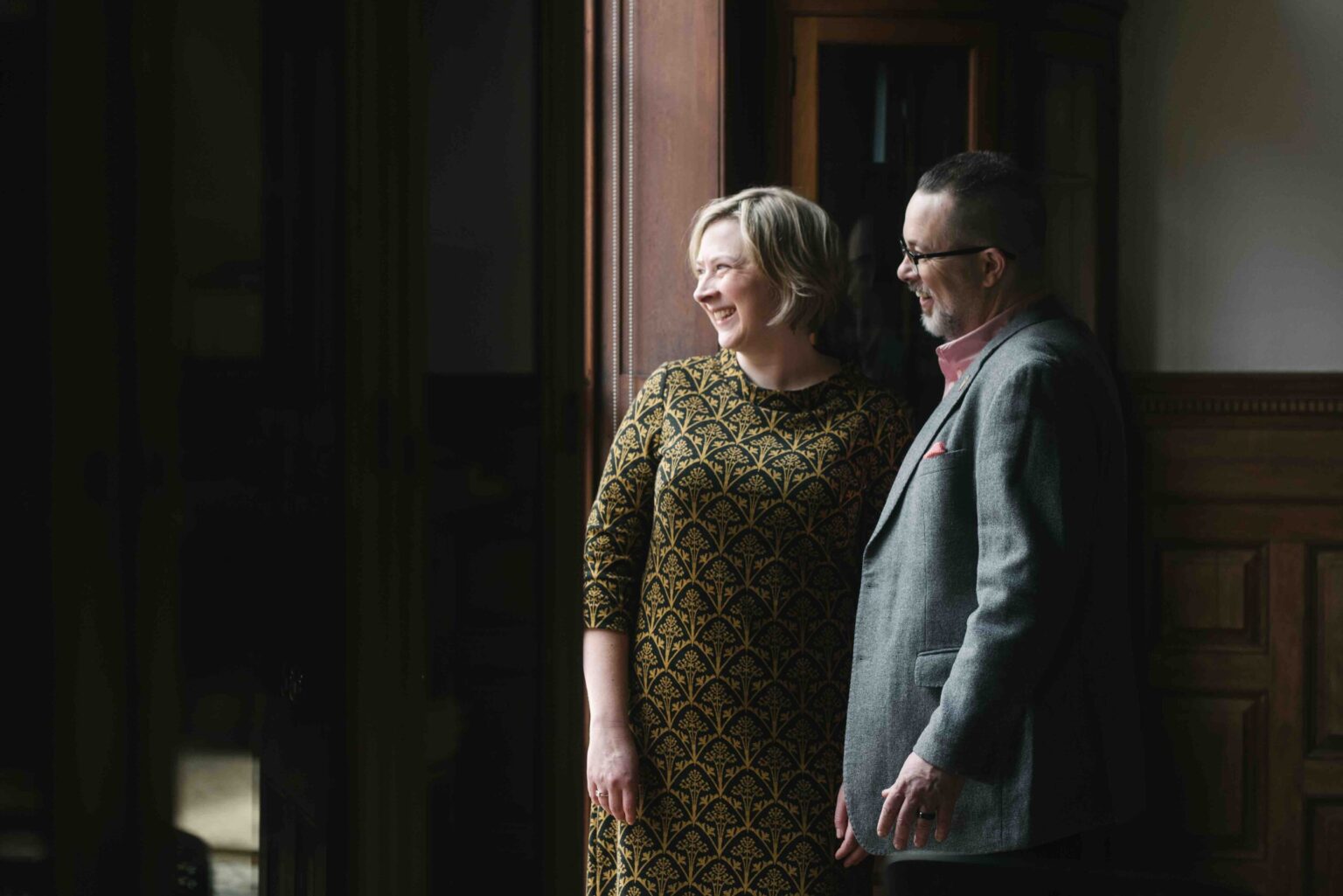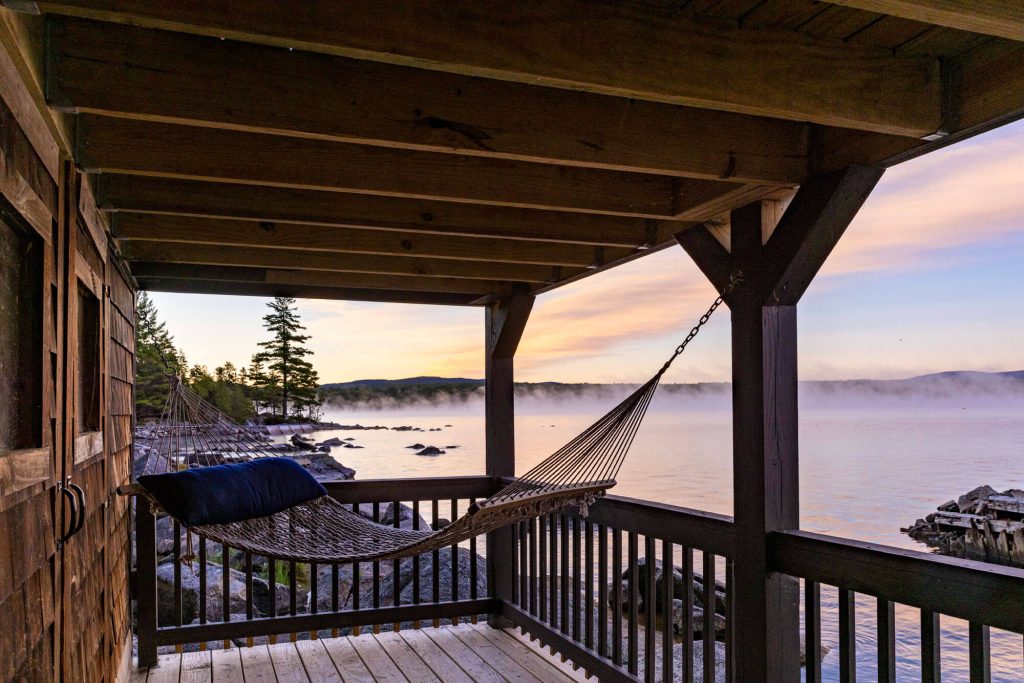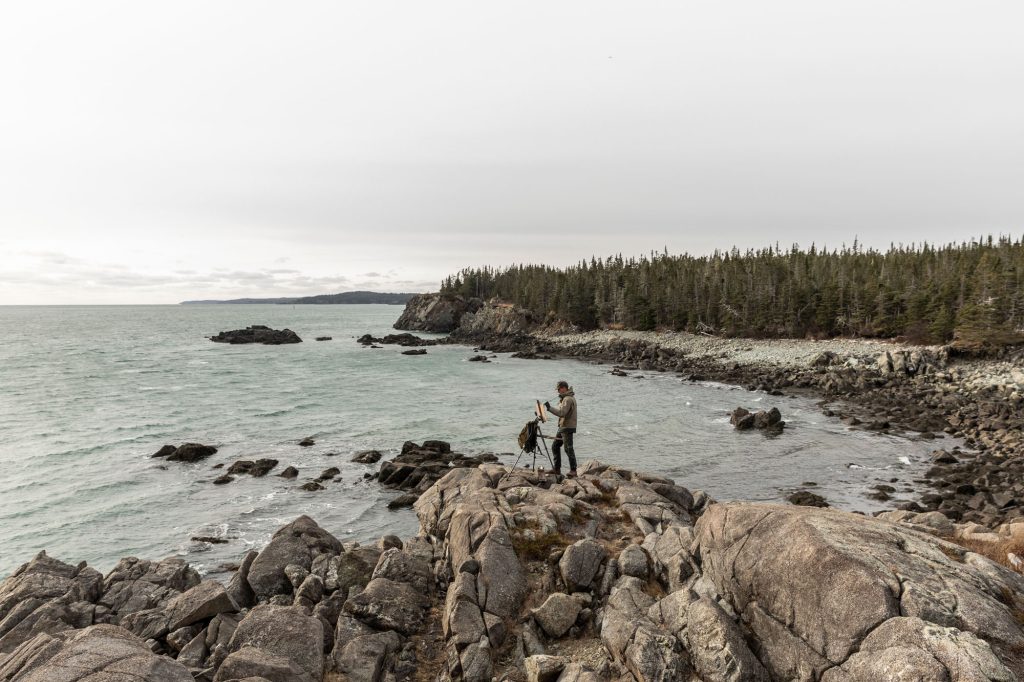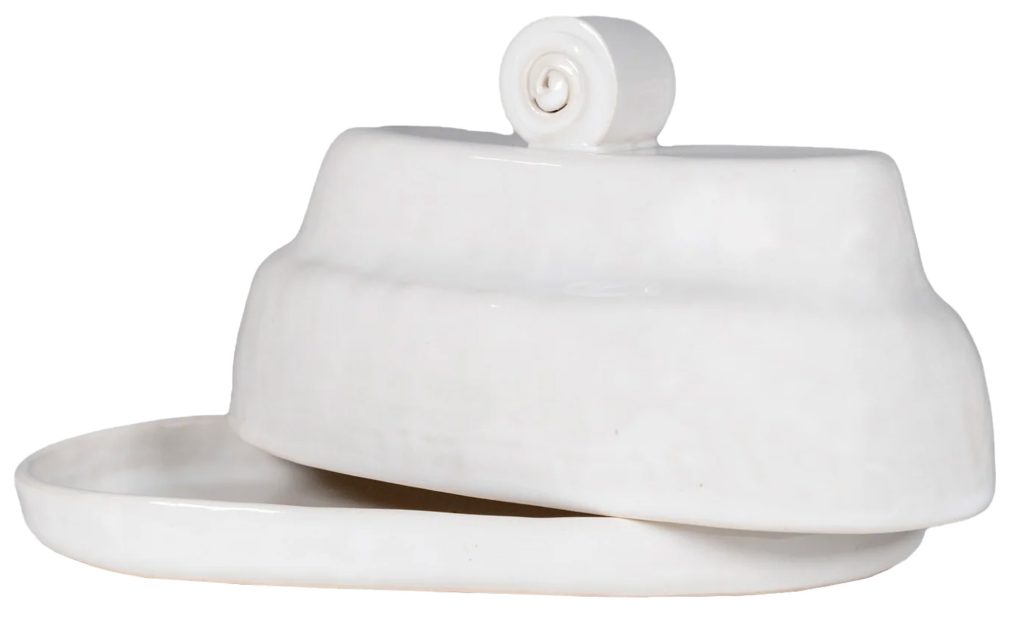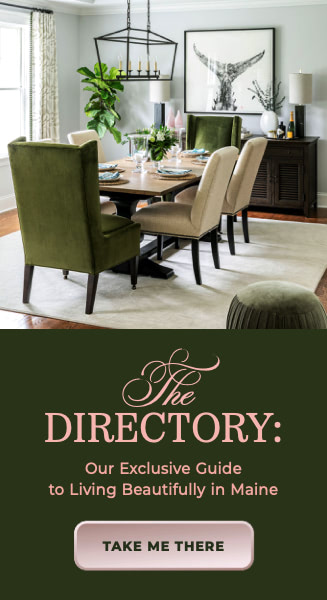The two, whose “meet cute” is right out of a rom-com, were each serving as coordinator of a state Main Street revitalization program—he in his native Arkansas and she in Washington State. After hanging out together during a national conference in Des Moines, Iowa—at a green-shag-carpeted bar serving “all the most terrible hipster beverages you can get for $1.25”—the two began crisscrossing the country for visits. Eventually, this led to stints together in Seattle and Little Rock, but the goal was always to get to Maine. Sarah, a fifth-generation Mainer, spent 20 years away but boomeranged back in 2017 for a job with Maine Preservation. Cary laughs about the status he shares with others from away: “We get here as soon as we can!” The couple and their three-legged cat, Tippi Eileen (they are special-needs-animal-rescue supporters), are now happily settled in a 1904 home in Westbrook, which they admit they haven’t yet had time to restore beyond wiring, insulation, and heating. They both volunteer for Discover Downtown Westbrook.
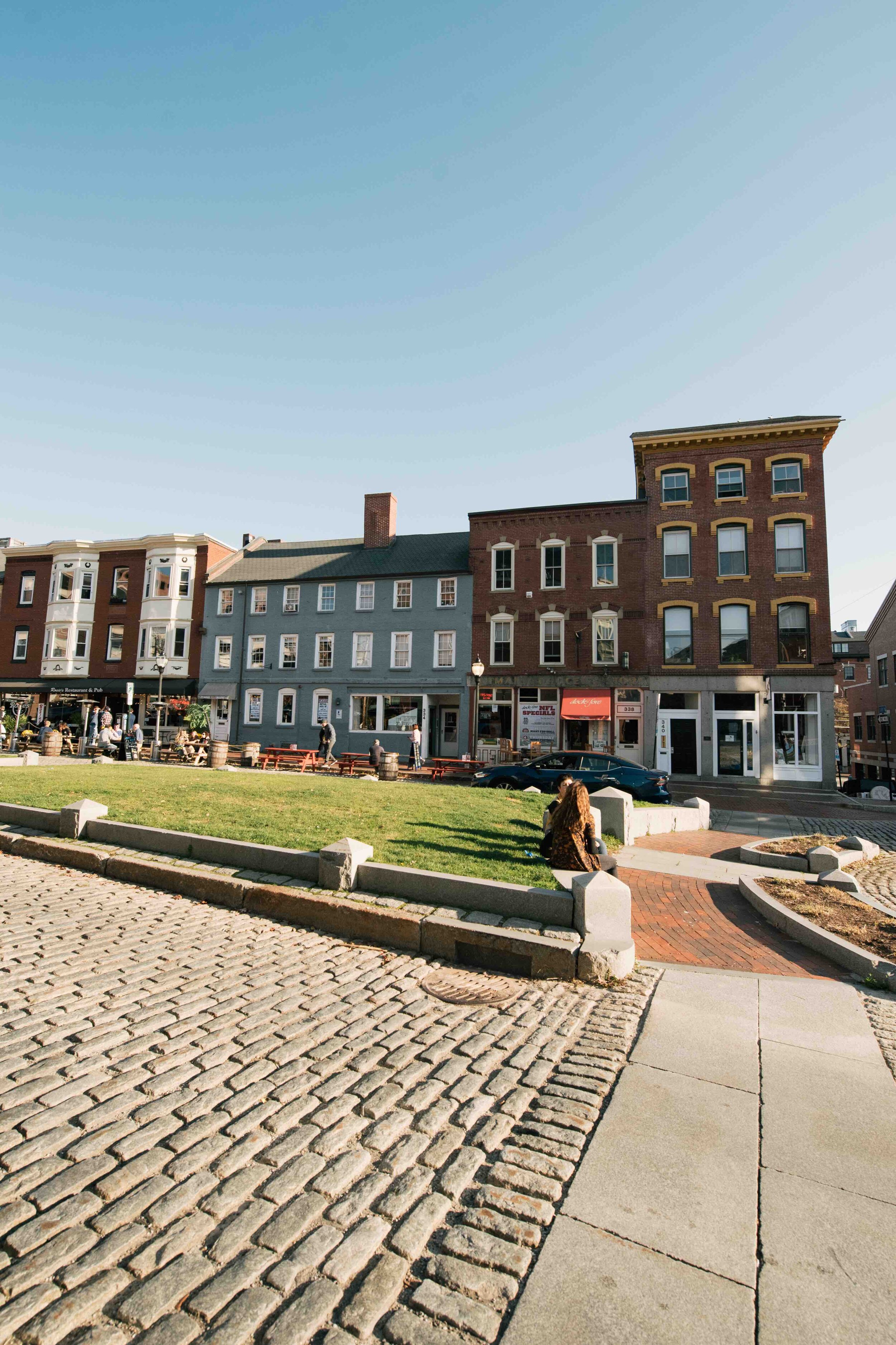
Cary rates Portland as one of the “finest downtowns in the country.”
Their long careers in Main Streets inform their current endeavors. The Main Street program, developed by the National Trust for Historic Preservation, stresses a holistic approach to downtown revitalization, focused not only on preservation and design but also on economic vitality, organization, and promotion.
“You can’t look at things in silos,” says Sarah, whose organization has begun addressing issues not typically considered by preservationists, including racial equity and diversity, affordable housing, and climate change. She’s working with the Atlantic Black Box Project, an organization of scholars looking at the history of the slave trade in New England, and has begun a closer partnership with Portland’s Abyssinian Meetinghouse, the third-oldest African American meetinghouse in the country, on its restoration efforts. “Maine has a reputation of being a very white state,” she notes, “but there is—and has been—more diversity here, beginning with the Wabanaki. It’s just been really overlooked. We’re trying to fix that.”
 Downtown businesses have had to safely adapt during the pandemic. Many restaurateurs—and diners—hope outdoor dining stays for the long haul.
Downtown businesses have had to safely adapt during the pandemic. Many restaurateurs—and diners—hope outdoor dining stays for the long haul.
 Cary and Sarah work and play in Downtown Portland.
Cary and Sarah work and play in Downtown Portland.
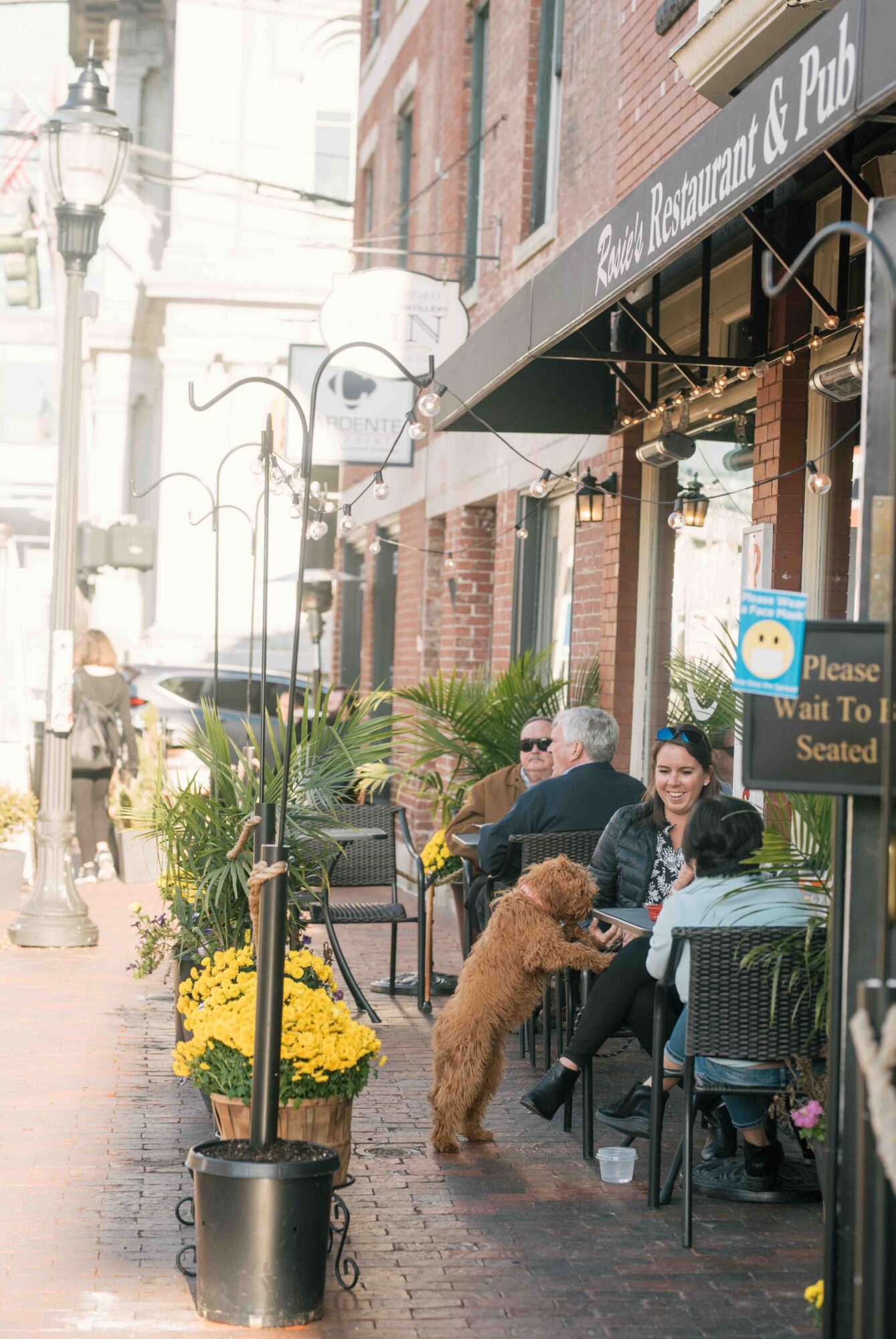 Opportunities for outdoor dining make many of Portland’s restaurants dog-friendly establishments.
Opportunities for outdoor dining make many of Portland’s restaurants dog-friendly establishments.
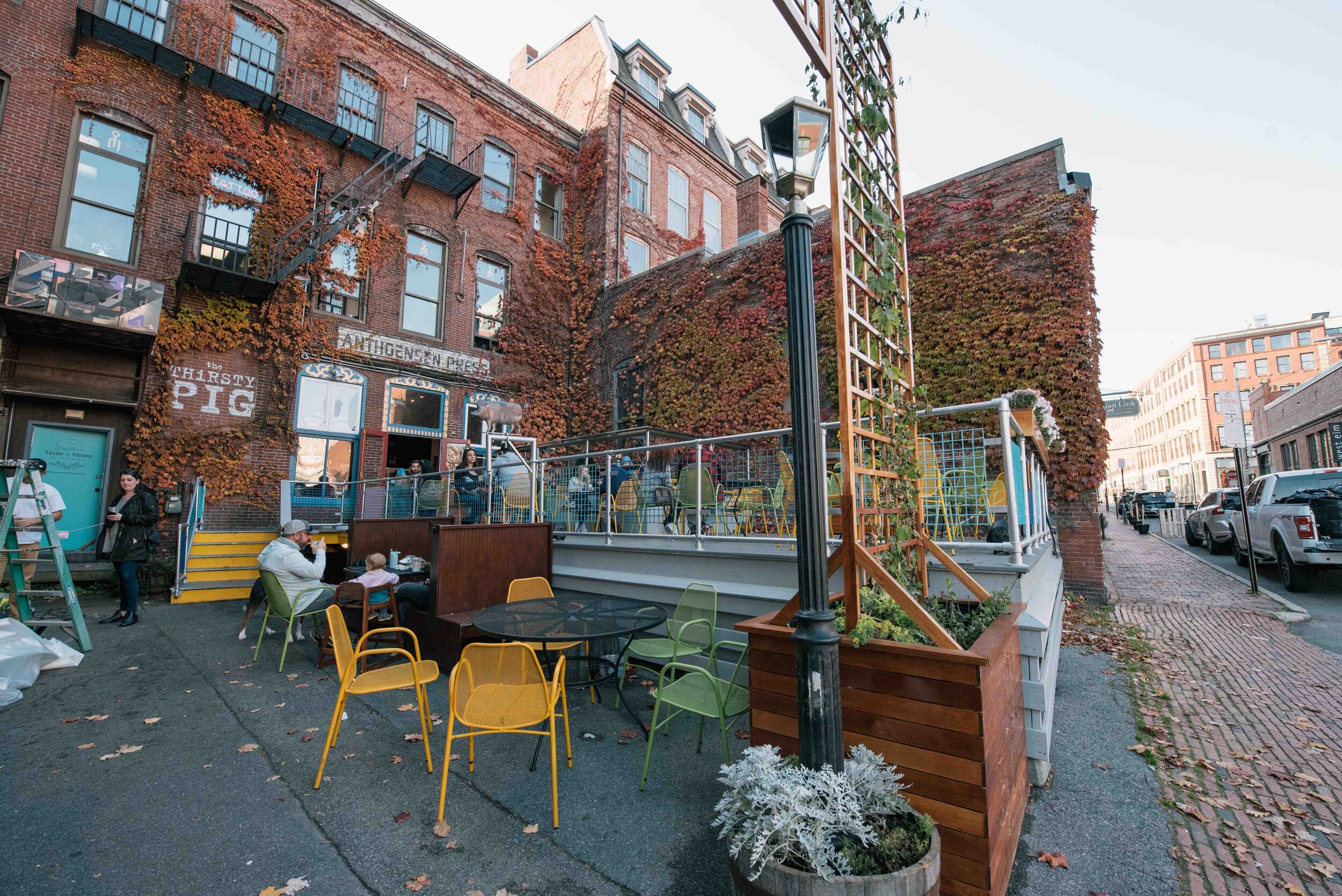 “We’ve seen an increase in outdoor dining,” says Cary. “It adds to the vibrancy of the street life.”
“We’ve seen an increase in outdoor dining,” says Cary. “It adds to the vibrancy of the street life.”
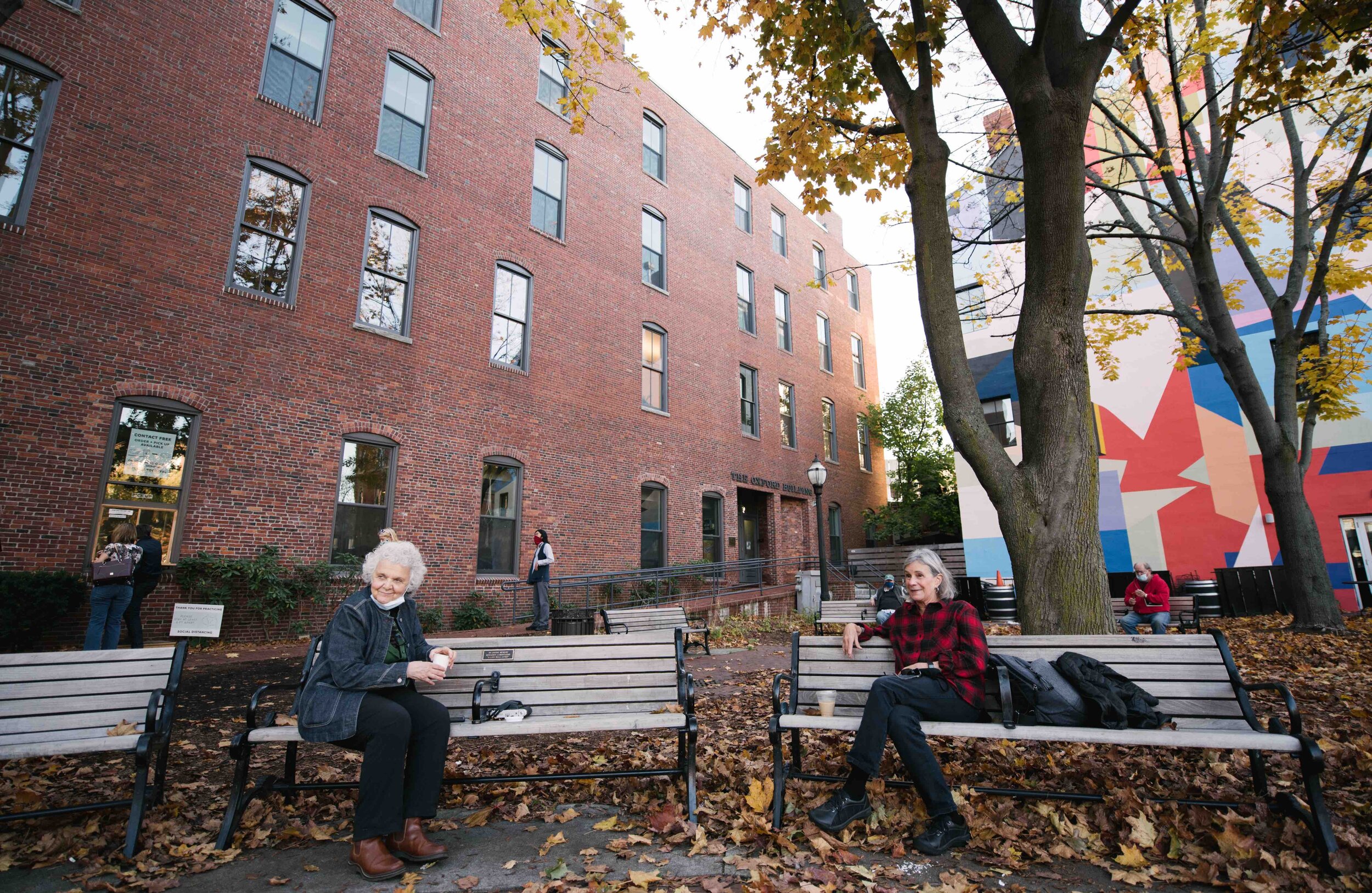 Portland’s numerous, scattered parks provide nodes and make for easy rest stops when walking.
Portland’s numerous, scattered parks provide nodes and make for easy rest stops when walking.
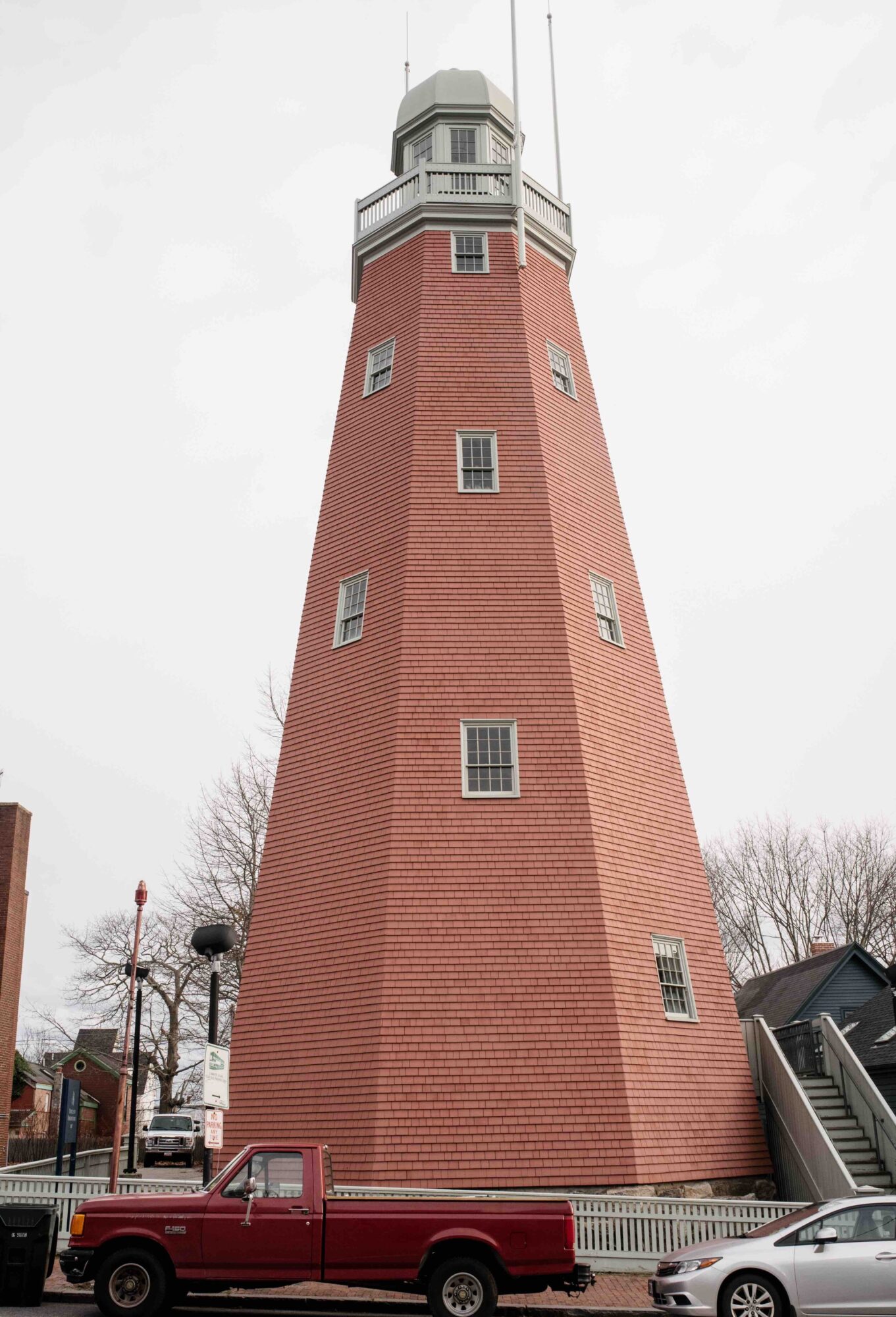 The iconic Portland Observatory cuts through incoming fog. The structure is managed by Greater Portland Landmarks.
The iconic Portland Observatory cuts through incoming fog. The structure is managed by Greater Portland Landmarks.
Portland Landmarks’ efforts to designate Munjoy Hill as a historic district, for instance, address not only the neighborhood’s historic vernacular architecture but also the stories of its working-class residents, including African Americans and immigrants, as well as the market pressures that have led to the loss of 40 affordable and market-rate housing units. Sarah observes that preservation has traditionally been used as an economic development tool, but in this case the goal is to use it as a stabilizer.
And climate change is part of the mix, too. Preservationists have been “late to the game,” she acknowledges, but says that with some of the fastest sea-level and ocean-temperature rise, coastal Maine must act. Sarah champions Governor Janet Mills’s Maine Climate Council and its climate action plan as well as the country’s only collaborative climate plan between municipalities, One Climate Future, between Portland and South Portland. Of course, she says, “Reusing buildings is pretty much the greenest thing you can do. But we’re also pro–new construction and innovative design, though we need to understand their impacts. We’re trying to find a good balance between creating energy-efficient older buildings and their old-growth materials versus the high manufacturing impacts of new materials going into new, energy-efficient buildings. We need to consider how we incentivize and regulate both.”
Cary’s organization also champions sustainability as part of the “Drive Less. Do More.” campaign. Portland, he says, is “built right, the way we used to build places . . . dense and walkable . . . with nodes and parks, all the things we know about livable, sustainable cities.” Still, he notes, it’s not just about design. Comparing Portland with Charleston, South Carolina, he says, in spite of Charleston’s beautiful architecture, its businesses are mostly chains that can be found anywhere. “Because of our diverse independent businesses, you know you’re in Portland,” making a much more compelling draw.
Portland Downtown’s efforts to sustain those independent businesses include Mission 3/65, a campaign (cosponsored with Portland Buy Local) encouraging shoppers to pick three local businesses and spend $65. (Portland Buy Local Executive Director Mary Alice Scott notes that 76 percent of money spent at locally owned, independent businesses stays in the community. And “if everyone in Cumberland County shifted just 10 percent of their shopping to such businesses, it would generate an additional $127 million into the local economy.”)


Cary is also working on additional place-making efforts, including the expansion of outdoor dining opportunities that have been so popular during the pandemic.
Both Cary’s and Sarah’s organizations welcome volunteers who share their mission. But mainly, Cary invites people just to come experience Downtown Portland, its businesses and surrounding historic districts. He rates Portland as one of the “finest downtowns in the country,” and as someone who’s worked across the U.S., he should know.
